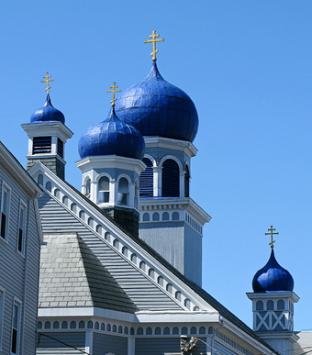James Joyce said it best in Finnegans Wake that “Catholic means here comes everybody.”
Our word “catholic” comes from a Greek adjective meaning “universal” and “together for the good of all.” Early Christians applied it to the church, and our earliest written example comes from Ignatius, bishop of Antioch, in the first decade of the second century.
Identifying Catholics who are not Roman, there are arguably at least three usages: Christians in union with the Holy See whose rituals are not of Roman origin, Christians of Orthodox Churches, and Reformation Christians who profess the Nicene Creed.
Because the Latin (Roman) rite is most widespread in Catholicism, many are unaware that there are thousands of Catholics in union with Rome whose liturgical ritual is derived from elsewhere. The Eastern Catholic Churches to which they belong are autonomous, or self-governing, and they have their own canon law. Their worship takes its historic development from Egypt, Syria, Armenia, and Constantinople rather than Rome.
Latin rite Catholics may be surprised by the differences in liturgy, but they are welcome to partake in communion because of the ecclesial and sacramental unity we share through the Chair of Peter.
One can also validly describe as “catholic” the Christians of the Orthodox churches. Though not in union with Rome, their sacraments and apostolic succession are considered valid by the Roman Catholic Church.
As with the original use of “catholic,” the word “orthodox” first served as an adjective that marked a quality of the church itself. The church was catholic by its universality and orthodox because of its true doctrine. The one Church of Christ, in East and West, was therefore catholic and orthodox. One of the greatest hopes of Pope John Paul II was to recover the unity of East and West, the “two lungs by which the church breathes.”
Finally, those Protestant communities who honor the Nicene Creed also profess themselves to be catholic. This includes Anglicans and Lutherans, among others. Our various doctrines may cause us to argue about the characteristics and sacraments of the church, but we agree in professing this church as “one, holy, catholic, and apostolic.”
Being catholic is applied not only to the church but to all of creation. As taught by the Second Vatican Council, we understand the Church of Christ to subsist within the Roman Catholic Church, but we have no monopoly on divine grace.
The Second Vatican Council taught in Lumen gentium that “Many elements of sanctification and of truth are found outside” the visible confines of the Catholic Church. Insofar as any human community enjoys the blessings of these elements of sanctification and truth, it can be considered catholic, at least to a degree.
This article appeared in the August 2012 issue of U.S. Catholic (Vol. 77, No. 8, page 46).












Add comment